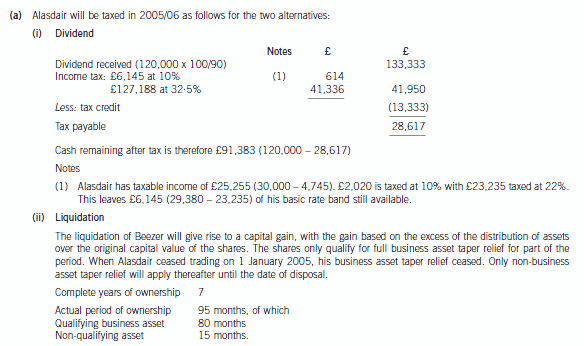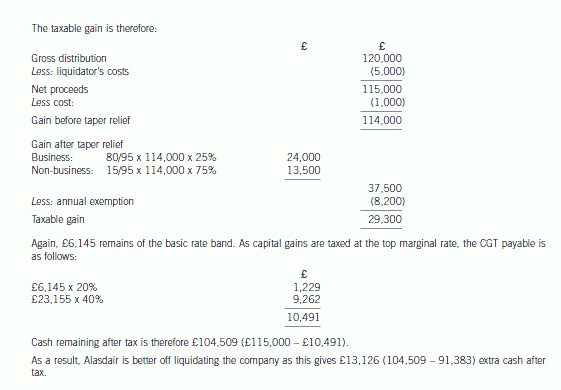重庆市考生注意:2020年ACCA考试,科目要这么选!
发布时间:2020-01-10
ACCA考试一共有13门考试科目,这对于一个刚学习ACCA的考生来说,多少有点难以下手的感觉。按照以往考霸学习经验,ACCA考试13门科目如何搭配比较合理呢?今天51题库考试学习网就给大家介绍一下吧!当然,51题库考试学习网推荐大家的报名顺序不一定是适用于每一个人的,仅供大家参考哟~大家一定要根据自己的学习能力和进度来调整报考顺序,毕竟适合自己的才是最好的。
ACCA考试科目共13科,分为四个大模块:知识模块(ACCA考试科目AB-FA)、技能模块(ACCA考试科目LW-FM)、核心模块(ACCA考试科目SBL&SBR)、选修模块(ACCA考试科目AFM-AAA)。学员只需要通过11门必修科目及2门选修科目共13门课程即可通过考试。
不过,总体来说,ACCA考试科目有两个部分:基础阶段和专业阶段。他们各自有哪些特点呢?
第一部分为基础阶段,主要分为知识课程和技能课程两个部分。知识课程主要涉及财务会计和管理会计方面的核心知识,也为接下去进行技能阶段的详细学习搭建了一个平台。技能课程共有六门课程,广泛的涵盖了一名会计师所涉及的知识领域及必须掌握的技能。
第二部分为专业阶段,主要分为核心课程和选修(四选二)课程。该阶段的课程相当于硕士阶段的课程难度,是对第一部分课程的引申和发展。该阶段课程引入了作为未来的高级会计师所必须的更高级的职业技能和知识技能。选修课程为从事高级管理咨询或顾问职业的学员,设计了解决更高级和更复杂的问题的技能。
对于ACCA考生来说,这必考的13门科目必须按模块顺序来报考,即知识模块-技能模块-核心模块-选修模块。必须按照这个顺序来报考,但是各个模块内部的科目是可以打乱顺序考的。例如:F1-F3,可以先考F3,再考F2,再考F1,后面的依此类推。
当然,ACCA每一次考试最多可以报满4科,那么可以把前面模块的都报上,报完以后还有剩余科目可以给后面模块的再报上后面模块的科目。
例如,可以一次把F1、F2、F3、F4都报上,考试结束后,F4、F3、F2都通过了,F1没通过,那么下次报F678等科目时,必须先把F1报上,如果考完了F4-F9的科目,F1还是没通过,报P阶段时,F1也必须先报上。就是说前一个模块没有考完的科目,必须在下一次报考下一个模块考试时都带上继续报考,直到通过。后面的依此类推。
F阶段的考试相对比较简单,P阶段考试科目是专业的阶段课程,相对于前面二部分是有难度的,对综合应用英语的能力和专业知识部分提出了新的挑战。ACCA考试科目P2、P4、P5偏向于计算,ACCA考试科目P1和P3的计算量较少。所以想一次性报考的话,ACCA考试科目P2、P4、P5偏向于计算,ACCA考试科目P1和P3的计算量较少,建议交叉考试分配,在告诉大家分配考试顺序之前,温馨提示一下大家:这里的可以随机顺序报考,指的是阶段内部的报考,譬如F阶段里面F1-F9你可以任意顺序报考,而硬性规定的一点就是F阶段的全部通过之后,才可以报考P阶段的考试。
这里给出的组合建议是:
1.毅力有精力有可以F6+F7+F9,然后F8+P1+P2,若是求稳,应该选择F6+F9,然后F7+F8
2.学习 F9 P2
3.学习 P1 P3
4.学习 P4 P5
为梦想孤注一掷,让努力苦尽甘来。以上信息希望可以帮助到你,最后51题库考试学习网祝你考试成功
下面小编为大家准备了 ACCA考试 的相关考题,供大家学习参考。
(c) With specific reference to Hugh Co, discuss the objective of a review engagement and contrast the level of
assurance provided with that provided in an audit of financial statements. (6 marks)
(c) The objective of a review engagement is to enable the auditor to obtain moderate assurance as to whether the financial
statements have been prepared in accordance with an identified financial reporting framework. This is defined in ISRE 2400
Engagements to Review Financial Statements.
In order to obtain this assurance, it is necessary to gather evidence using analytical procedures and enquiries with
management. Detailed substantive procedures will not be performed unless the auditor has reason to believe that the
information may be materially misstated.
The auditor should approach the engagement with a high degree of professional scepticism, looking for circumstances that
may cause the financial statements to be misstated. For example, in Hugh Co, the fact that the preparer of the financial
statements is part-qualified may lead the auditor to believe that there is a high inherent risk that the figures are misstated.
As a result of procedures performed, the auditor’s objective is to provide a clear written expression of negative assurance on
the financial statements. In a review engagement the auditor would state that ‘we are not aware of any material modifications
that should be made to the financial statements….’
This is normally referred to as an opinion of ‘negative assurance’.
Negative assurance means that the auditor has performed limited procedures and has concluded that the financial statements
appear reasonable. The user of the financial statements gains some comfort that the figures have been subject to review, but
only a moderate level of assurance is provided. The user may need to carry out additional procedures of their own if they
want to rely on the financial statements. For example, if Hugh Co were to use the financial statements as a means to raise
further bank finance, the bank would presumably perform, or require Hugh Co to perform, additional procedures to provide
a higher level of assurance as to the validity of the figures contained in the financial statements.
In comparison, in an audit, a high level of assurance is provided. The auditors provide an opinion of positive, but not absolute
assurance. The user is assured that the figures are free from material misstatement and that the auditor has based the opinion
on detailed procedures.
3 The ‘person specification’ is derived from the job description.
Required:
(a) Explain what is meant by the terms:
(i) ‘person specification’; (4 marks)
3 Overview:
A traditional job description can only list or outline the tangible elements of a job. As work becomes more challenging, more
information is required about the skills needed to perform. that job. A person specification is of greater value in the professional
sector, where it is inappropriate to assume repetition and where there is a greater degree of discretion in performing the task.
Part (a):
(i) A person specification - also referred to as a personnel specification – provides the organisation with a profile of the kind of
person that would match the needs of the post. It sets out in written detail the education, qualifications, training, experience,
personal attributes and competencies a post holder must possess to perform. the task to the satisfaction of the organisation.
It describes the person needed to fulfil the task.
(ii) If a partner, who is an actuary, provides valuation services to an audit client, can we continue with the audit?
(3 marks)
Required:
For each of the three questions, explain the threats to objectivity that may arise and the safeguards that
should be available to manage them to an acceptable level.
NOTE: The mark allocation is shown against each of the three questions above.
(ii) Actuarial services to an audit client
IFAC’s ‘Code of Ethics for Professional Accountants’ does not deal specifically with actuarial valuation services but with
valuation services in general.
A valuation comprises:
■ making assumptions about the future;
■ applying certain methodologies and techniques;
■ computing a value (or range of values) for an asset, a liability or for a business as a whole.
A self-review threat may be created when a firm or network firm2 performs a valuation for a financial statement audit
client that is to be incorporated into the client’s financial statements.
As an actuarial valuation service is likely to involve the valuation of matters material to the financial statements (e.g. the
present value of obligations) and the valuation involves a significant degree of subjectivity (e.g. length of service), the
self-review threat created cannot be reduced to an acceptable level of the application of any safeguard. Accordingly:
■ such valuation services should not be provided; or
■ the firm should withdraw from the financial statement audit engagement.
If the net liability was not material to the financial statements the self-review threat may be reduced to an acceptable
level by the application of safeguards such as:
■ involving an additional professional accountant who was not a member of the audit team to review the work done
by the actuary;
■ confirming with the audit client their understanding of the underlying assumptions of the valuation and the
methodology to be used and obtaining approval for their use;
■ obtaining the audit client‘s acknowledgement of responsibility for the results of the work performed by the firm; and
■ making arrangements so that the partner providing the actuarial services does not participate in the audit
engagement.
6 Alasdair, aged 42, is single. He is considering investing in property, as he has heard that this represents a good
investment. In order to raise the funds to buy the property, he wants to extract cash from his personal company, Beezer
Limited, whose year end is 31 December.
Beezer Limited was formed on 1 May 1998 with £1,000 of capital issued as 1,000 £1 ordinary shares, and traded
until 1 January 2005 when Alasdair sold the trade and related assets. The company’s only asset is cash of
£120,000. Alasdair wants to extract this cash from the company with the minimum amount of tax payable. He is
considering either, paying himself a dividend of £120,000, on 31 March 2006, after which the company would have
no assets and be wound up or, leaving the cash in the company and then liquidating the company. Costs of liquidation
of £5,000 would then be incurred.
Since Beezer Limited ceased trading, Alasdair has been taken on as a partner at a marketing firm, Gallus & Co. He
estimates his profit share for the year of assessment 2005/06 will be £30,000. He has not made any capital disposals
in the current tax year.
Alasdair wishes to reinvest the cash extracted from Beezer Limited in property but is not sure whether he should invest
directly in residential or commercial property, or do so via some form. of collective investment. He is aware that Gallus
& Co are looking to rent a new warehouse which could be bought for £200,000. Alasdair thinks that he may be able
to buy the warehouse himself and lease it to his firm, but only if he can borrow the additional money to buy the
property.
Alasdair has a 25% shareholding in another company, Glaikit Limited, whose year end is 31 March. The remaining
shares in this company are held by his friend, Gill. Alasdair is considering borrowing £15,000 from Glaikit Limited
on 1 January 2006. He does not intend to pay any interest on the loan, which is likely to be written off some time
in 2007. Alasdair does not have any connection with Glaikit Limited other than his shareholding.
Required:
(a) Advise Alasdair whether or not a dividend payment will result in a higher after-tax cash sum than the
liquidation of Beezer Limited. Assume that either the dividend would be paid on 31 March 2006 or the
liquidation would take place on 31 March 2006. (9 marks)
Assume that Beezer Limited has always paid corporation tax at or above the small companies rate of 19%
and that the tax rates and allowances for 2004/05 apply throughout this part.


声明:本文内容由互联网用户自发贡献自行上传,本网站不拥有所有权,未作人工编辑处理,也不承担相关法律责任。如果您发现有涉嫌版权的内容,欢迎发送邮件至:contact@51tk.com 进行举报,并提供相关证据,工作人员会在5个工作日内联系你,一经查实,本站将立刻删除涉嫌侵权内容。
- 2020-03-12
- 2020-03-08
- 2020-01-08
- 2020-04-28
- 2020-01-09
- 2020-03-03
- 2020-03-27
- 2020-03-04
- 2019-12-30
- 2020-01-11
- 2020-03-29
- 2020-04-18
- 2019-07-21
- 2020-05-20
- 2020-03-13
- 2020-01-08
- 2020-05-21
- 2020-01-10
- 2020-01-09
- 2020-01-10
- 2020-05-17
- 2020-01-08
- 2020-01-09
- 2020-02-21
- 2020-04-18
- 2020-03-21
- 2020-01-30
- 2020-01-08
- 2020-05-20
- 2020-04-15